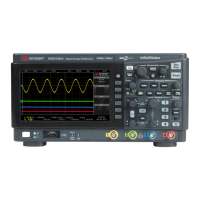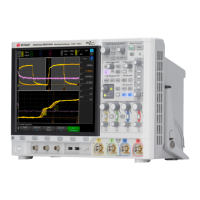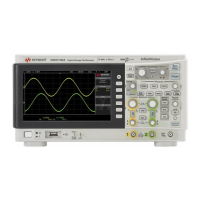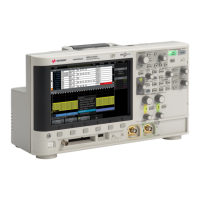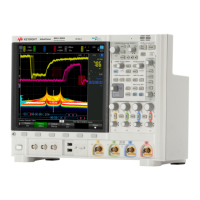CAN/LIN Triggering and Serial Decode 23
Keysight InfiniiVision 3000 X-Series Oscilloscopes User's Guide 347
• Differential (H-L) — The CAN differential bus signals connected to an analog
source channel using a differential probe. Connect the probe's positive lead
to the dominant-high CAN signal (CAN_H) and connect the negative lead to
the dominant-low CAN signal (CAN_L).
Dominant low signals:
• Rx — The Receive signal from the CAN bus transceiver.
• Tx — The Transmit signal from the CAN bus transceiver.
• CAN_L — The actual CAN_L differential bus signal.
• Differential (L-H) — The CAN differential bus signals connected to an analog
source channel using a differential probe. Connect the probe's positive lead
to the dominant-low CAN signal (CAN_L) and connect the negative lead to
the dominant-high CAN signal (CAN_H).
CAN Triggering
To set up the oscilloscope to capture a CAN signal, see "Setup for CAN
Signals" on page 345.
The Controller Area Network (CAN) trigger allows triggering on CAN version 2.0A
and 2.0B signals.
A CAN message frame in CAN_L signal type is shown below:
After setting up the oscilloscope to capture a CAN signal:
1 Press [Trigger].
2 In the Trigger Menu, press the Trigger softkey; then, turn the Entry knob to
select the serial slot (Serial 1 or Serial 2) on which the CAN signal is being
decoded.
Arbitration
Field
Bus
Idle
Data
Field
SOF edge
Control
Field
ACK
Field
Intermission
CRC
Field
EOF
